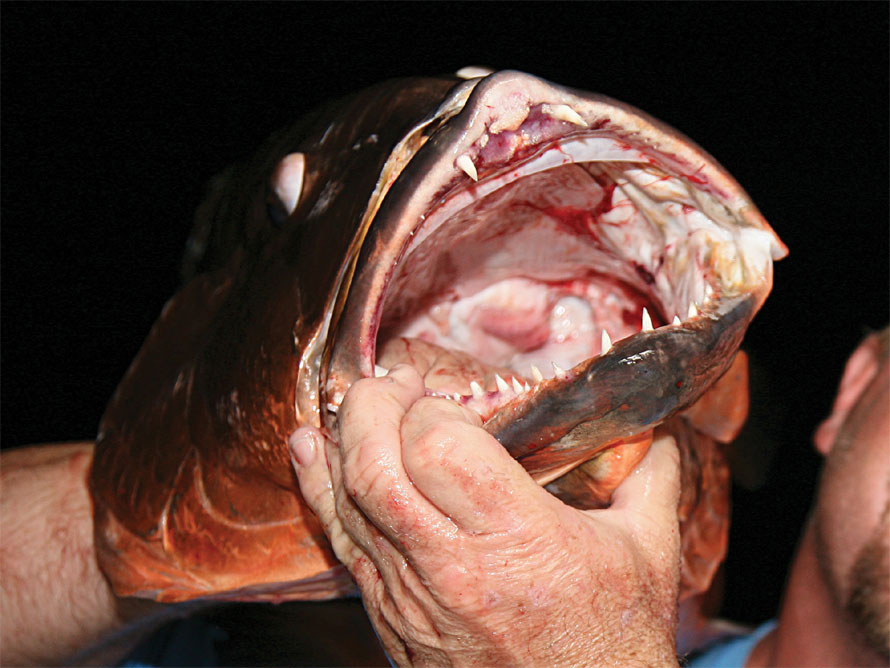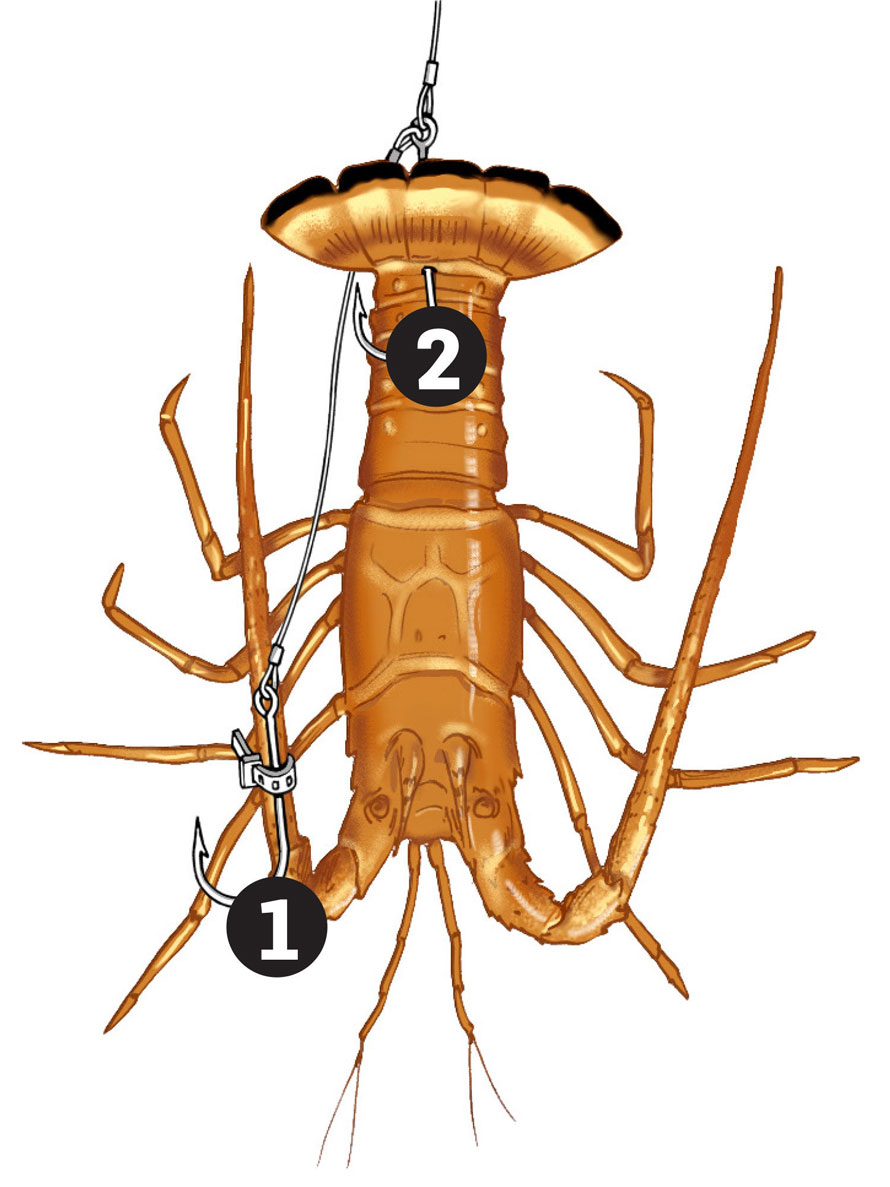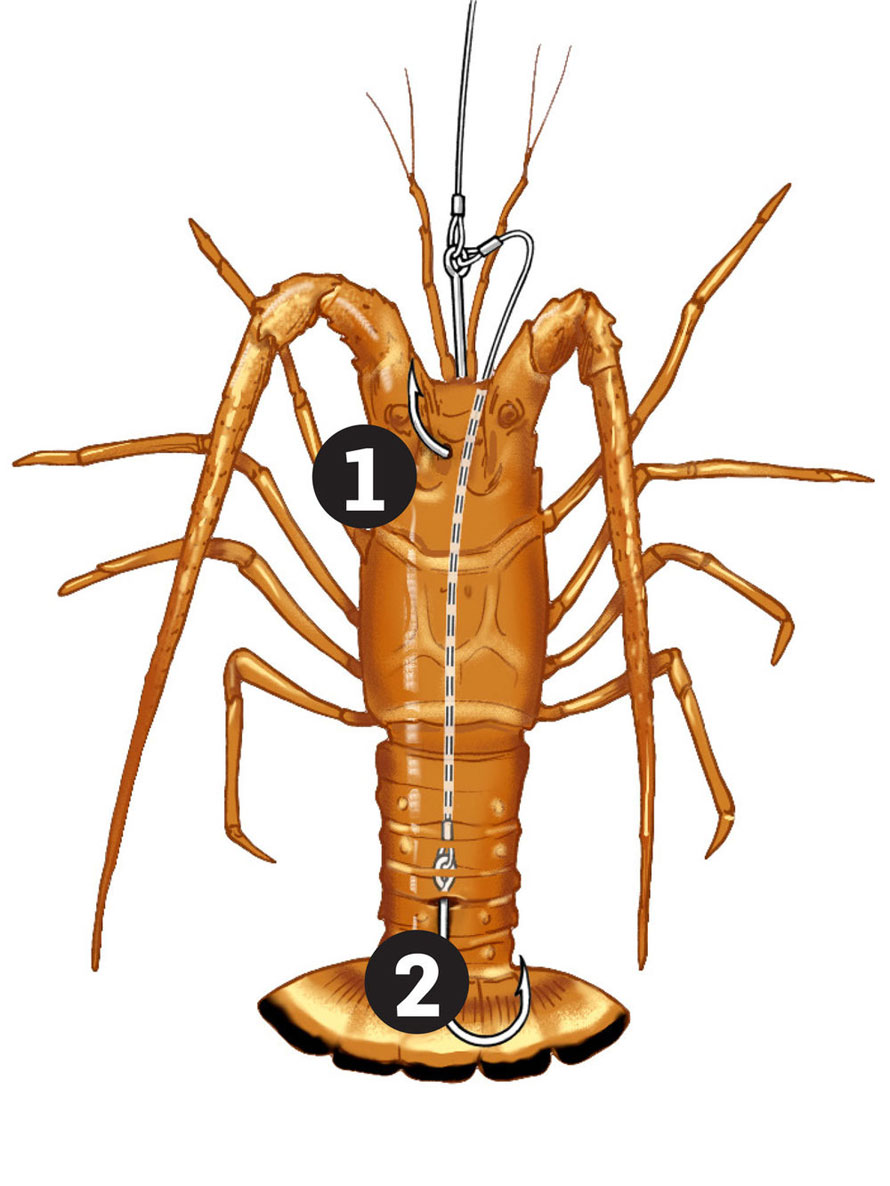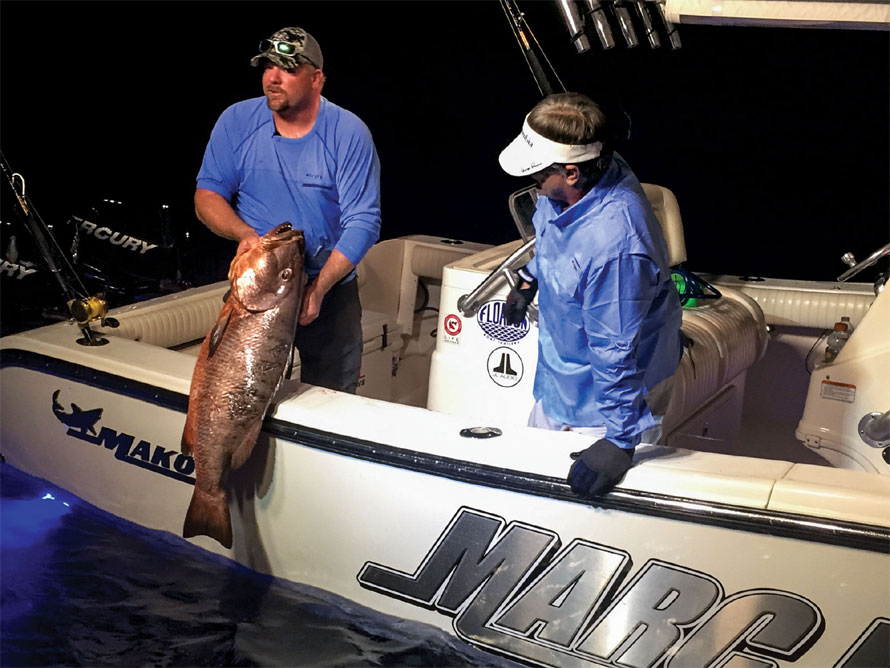It Takes Some Bugs To Entice These Giant Snapper
by George Poveromo
.jpg)
The live lobster was doomed from the start. My sonar marked cuberas schooling 180 feet down, and the instant the bait reached that depth, it was viciously consumed.
Despite the drag being nearly locked down, 100-pound braid poured off the reel, and Capt. Kevin Jeffries struggled to stop the powerful fish from reaching the wreck '’’ which wasn't far off. It was touch and go for a moment, and it wasn't clear at first who would emerge victorious. Jeffries' experience and brawn ultimately won the tug of war, though perhaps with a little assistance. The captain had turned the hooked brute and had it coming to the boat when an even bigger monster '’’ a goliath grouper '’’ tried to eat it. So the first cubera of the night '’’ a 50-pounder '’’ came up dead, with jaw marks, scales missing and a crushed spine. It's a tough ocean out there.
.jpg)
Forgotten Tradition
South Florida saltwater �anglers, more specifically those in Miami-Dade County and the Florida Keys, may recall the heralded cubera snapper runs of Augusts past. They were strictly heavy-tackle angling, and Key Largo was the epicenter. To beat the intense late-summer heat, anglers fished at night around the moon phases when schooling cuberas were predicted to feed. Sleep was sacrificed and small fortunes invested in the purchase of bait '’’ live lobster '’’ for the chance to tangle with the powerful, oversize snapper. Over the years, cubera fever faded away, and that's just fine with the die-hards who still partake in the annual run. �Cuberas still arrive like clockwork, and the action is often unreal. The only thing that has truly changed is the drop in recreational-angling pressure.
Sweet Home Key Largo
A major wreck and debris scattered between 220 and 250 feet of water off northern Key Largo comprise a rare cubera spawning site. Aside from an area near the Dry Tortugas, there's no other known spot off the southeastern U.S. or the Gulf of Mexico where these fish congregate in large numbers. The giant snapper arrive in force in July, and they remain through mid-September.
Night Moves
Aggressive feeding occurs primarily at night, and some �anglers time the bite based on the moon. Jeffries favors the four days leading up to and after the full moon in July, August and September. Nevertheless, cuberas can be a fickle bunch; just because they mark solidly on sonar, it doesn't mean they'll eat. But when they turn on, the action is wild. Capt. Bouncer Smith, who targets these fish annually, recalls a time when his crew went through two-dozen lobsters in a two-and-a-half-hour span and caught 16 and one-half cuberas (one was chomped by a shark). That took place two days prior to a full moon in September.

Cuberas are opportunistic feeders, yet they show a marked preference for crustaceans, primarily lobster. Prior to lobster season, blue crab is the bait of choice. But crab quickly becomes a second stringer once lobster is legal in August. Both Jeffries and Smith claim the lobster bite is the most consistent, but if you have access to both crustaceans, take them. Live goggle-eyes, blue runners and other finfish are used occasionally, but they are often picked off by sharks, barracuda and kingfish. Meanwhile, lobster and crab guarantee the longest and most productive soak times. Proven Rig The business end of a cubera rig consists of 15 to 30 feet of 130- to 150-pound monofilament leader crimped onto a 10/0 extra-strong hook. A second 10/0 hook on a short length of the same mono, crimped to the eye of the lead hook, serves as a �stinger. The leader is joined to the braided fishing line with a three-way swivel. The swivel's third eye accommodates a short length (3 to 6 feet) of 40-pound mono, to which a bank sinker (heavy enough to penetrate the current) is attached. We used 24-ounce sinkers on our trip.
Bring the Big Guns
Cuberas are tackle wreckers. Plus, they often school above or near wrecks. You need heavy gear to turn a 50-pounder and keep it from breaking off on the structure. On a cubera trip with Jeffries last August, we used beefy Penn International V stand-up rods (80- to 130-pound class), paired with Penn International 16 and Torque 40 LD two-speed reels filled with 80- and 100-pound braid. The reels' low gearing provides the cranking power needed to pull cuberas up from the depths.

Head and Tail Rig
Push in the point of the lead hook at the top of the carapace and out between the horns. Then embed the second hook through the tail.

Tail and Antenna Rig
Push in the point of the lead hook at the top of the carapace and out between the horns. Then embed the second hook through the tail.

Play with Your Food
The painful part of �cubera fishing (outside the strenuous battles on heavy tackle) is removing a frisky lobster from the livewell, impaling it with two hooks, and �dropping it over the side. Somehow, you must muster the strength to forgo thoughts of the bugs drizzled with melted butter on your grill and instead focus on burnt orange '’’ the color of cubera snapper. Jeffries and Smith rig their lobsters differently. Jeffries impales the lead hook underneath and out the top of the carapace, and the stinger hook goes in under and out the base of the tail. Smith opts to run the lead hook underneath and out the top of the base of the tail, and he attaches the stinger hook to the base of an antenna with a zip tie. Smith feels the lobster looks more natural drifting along tail first. Yet both pros continue to score enough cuberas to prove that either variation works and finding the fish is more crucial than the bait rigging. Stay on Top
Locating the fish is the first step. Using the main wreck as a base, we idled around the general area until a concentration appeared on sonar. In a perfect world, the cuberas will be away from the main wreck and other high-profile snags rather than above or tight to them. This affords the �opportunity to battle the fish with minimal threat of them reaching structure and abruptly parting ways. You may even get to relax a little and savor the confrontation. Once a concentration is marked, use the boat motors to stem the current and remain directly above the fish. Note the depth of the schooling cuberas and lower a bait right smack into them. A second bait could be staggered a bit deeper or shallower until the strike zone is determined.

Decipher the Puzzle
- LOCATE TARGET: Once a pack of cuberas is located with the fish finder, mark the spot, note their depth and drop baits right to them.
- STRUCTURE: Instead of holding tight against wrecks and sunken debris, cuberas suspend above or patrol the surrounding
- NEARBY FORAGE: Baitfish schools near a wreck often draw hungry cuberas up off the bottom to investigate.
Seconds Anyone?
On the strike, as the rod tip rapidly dips toward the �water, reel for all you are worth to set the hooks. Should you miss hooking a fish, don't automatically assume your entire bait was taken. Both Jeffries and Smith advise pausing and letting the rig remain near the strike zone to give another cubera a chance to consume any part of the lobster remaining on either hook. A hooked cubera will power its way toward the bottom and any available structure or debris. Apply heavy pressure and '’’ during that one split second when the fish slows down or stops '’’ pump and wind quickly and steadily to turn it. Even with heavy tackle, expect hard-charging runs and brutal up-and-down battles. Hooking a cubera on top of a wreck virtually guarantees defeat. Again, search for fish in the vicinity of the wreck versus over it. The first evening of my trip with Jeffries, the fish were above the wreck. We hooked three fish, and two earned their freedom by reaching the sunken hull. I had the third cubera turned and coming our way, but a failed crimp (my fault) cost us that fish too. By contrast, the next evening we found the cuberas schooling away from the wreck, and we boated two of the three fish we hooked. Just Rewards
Some anglers cherish cuberas as table fare and others strictly for sport. Though I've yet to hear of any documented reports of ciguatera poisoning in the upper Keys, many anglers '’’ myself �included '’’ aren't comfortable keeping a 40- to 80-pounder to eat, so most big cuberas are released. The real delicacy is the leftover bait. Staying out all night and using live lobsters to catch fish of debatable food quality may sound crazy, but don't knock it 'til you've tried it. When cubera action is hot, your sore arms and back will remind you of every battle with those mammoth, dog-toothed bottom dwellers. Even when it's not, you're still left with the main ingredient for a delicious lobster dinner afterward.

